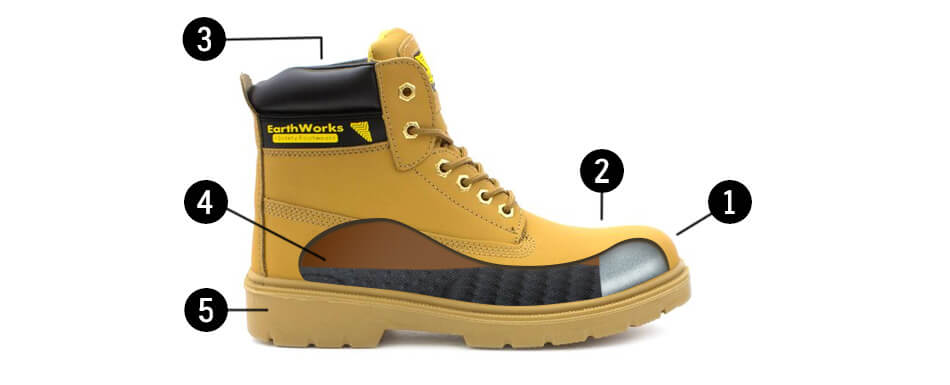Safety Shoe Materials
1) Toe Cap - Even though they’re often referred to as having steel toe caps, this isn’t necessarily the case. Sometimes the reinforced toe cap in safety boots and shoes can be made from composite materials, plastic such as TPU (thermoplastic polyurethane) or even aluminium.
As all safety boots are made for different uses, the minimum requirements from a toe cap vary from boot to boot. Regardless of this and the materials that they’re made from, any protective toe cap should withstand a minimum of 100 joules in a drop test.
2) Upper - Most safety footwear will have smooth or nubuck leather uppers as opposed to manmade materials. Some safety shoes are also made with textile or synthetic uppers such as micro-velour, these are quite significantly more breathable so work well in hot conditions, however leather is a much more stable material so offers greater protection against the elements and hazards.

3) Lining - As the lining is in direct contact with the foot, it’s important it is made from a material that allows breathability, absorbs moisture and dries quickly. Most linings in safety boots are made from materials such as cotton, wool or leather or thermoregulating textile composites as all of these have those qualities.
4) Insoles - The insole is designed to offer protection for the feet as well as comfort, with that in mind, most insoles in safety shoes are made from leather or a non-woven material such as wool. These materials are durable, absorb moisture efficiently and dry quickly, making them ideal for insoles.
5) Outsoles - The outsoles on safety boots are most commonly made from polyurethane, TPU or rubber. All of these materials have different characteristics, so it’s important to consider this when choosing the right safety footwear for you.
Some safety shoes may also have additional padding for support, heel caps and scuff caps. Whilst not present in every case, they should definitely be considered, especially if you use your feet to operate heavy machinery.